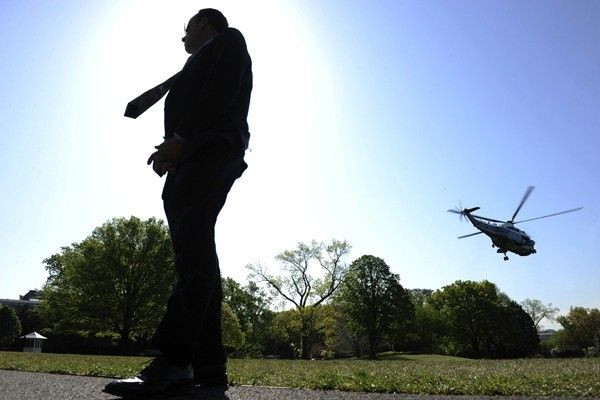US Secret Service: 5 Things To Know

The U.S. Secret Service (USSS) may have led media reports in recent days with a number of its members embroiled in a Colombian prostitution scandal, but making headlines is unusual for the historically secretive federal law-enforcement agency.
Six of the 12 Secret Service members implicated in the ongoing investigation have left the agency, after it was discovered they brought prostitutes to their hotel rooms in Colombia early last week, ahead of a visit to the country by President Barack Obama. While the scandal has presented a new, unsavory image of the Secret Service, it hardly defines the agency or the missions it carries out.
Created To Investigate Counterfeit Money Post-Civil War
While the Secret Service may be primarily known for being a constant presence surrounding the president and the first family, it was created as an investigation agency, according to a new report from the Congressional Research Service outlining the Secret Service's evolving missions.
The USSS was established as a branch of the U.S. Treasury Department in 1865 to investigate the counterfeiting of U.S. currency that was widespread after the Civil War. By that year, between one-third and one-half of all currency in circulation was counterfeit, the Congressional Research Service reported. Public trust in American currency was so low that at the 1865 swearing-in of the first chief of what was then known as the Secret Service Division (SSD), then-Treasury Secretary Hugh McCulloch stated that your main objective is to restore the public confidence in the money of the country.
The Office of the Solicitor of the Treasury administered the SSD until 1879. The agency did not receive statutory recognition until 1882, when the 47th Congress appropriated funds to the division for the first time.
Grover Cleveland Was First President To Receive Secret Service Protection
The investigation of counterfeiting continued to be the Secret Service's only mission until 1894, when it began to unofficially protect President Grover Cleveland on a part-time basis. Congress informally requested that the SSD officially protect the commander in chief following the assassination of President William McKinley in 1901; five years later, Congress appropriated funds for the protection of the president for the first time with the passage of the Sundry Civil Expenses Act for 1907.
Who Is Authorized For Secret Service Protection?
The individuals authorized to receive USSS protection currently include:
- The president, vice president, president-elect, and vice president-elect, as well as their immediate families.
- Former presidents and their spouses, as well as former presidents' children under 16.
- Visiting heads of foreign states or governments, distinguished foreign visitors, and official U.S. representatives on special missions abroad.
- Major presidential and vice presidential candidates and their spouses within 120 days of the general presidential elections.
- Former vice presidents, their spouses, and their children under 16.
While the USSS originally served as a bodyguard for the individuals under its charge, the agency's protection operations have become more stringent with time. Now, agents' protection duties require not only constantly being in proximity to their charges but also advancing the security standards of locations to be visited, coordinating with state and local enforcement entities, and providing intelligence analysis of present and future threats.
USSS Was Part Of The Treasury Department Until 2003
After being an entity of the Treasury Department for more than a century, the Secret Service was transferred to the Department of Homeland Security in 2003 after the enactment of the Homeland Security Act of 2002.
Following the terrorist attacks of Sept. 11, 2001, Congress enacted the USA Patriot Act, which furthered the reach of the Secret Service by authorizing the agency to establish nationwide electronic crime task forces aimed at detecting and suppressing computer-based crimes.
Seven Presidents Have Been Directly Assaulted Under USSS Protection
There have been seven direct assaults on U.S. presidents since the Secret Service was placed on full-time protection duty -- two of which involved President Gerald Ford. The former president faced two assassination attempts in September 1975: The first involved Lynette Fromme, a member of the so-called Manson Family, and the second 17 days later involved Sarah Jane Moore, a mentally unstable nursing student who fired a single shot that narrowly missed Ford.
John F. Kennedy is the only president to have been assassinated while under full Secret Service protection.
Former Presidents Harry Truman, Ronald Reagan, Bill Clinton, and George W. Bush were also attacked by would-be assassins. Reagan is the only one who sustained an injury, when he suffered a punctured lung after being shot by John Hinckley Jr. in 1981.
© Copyright IBTimes 2024. All rights reserved.





















